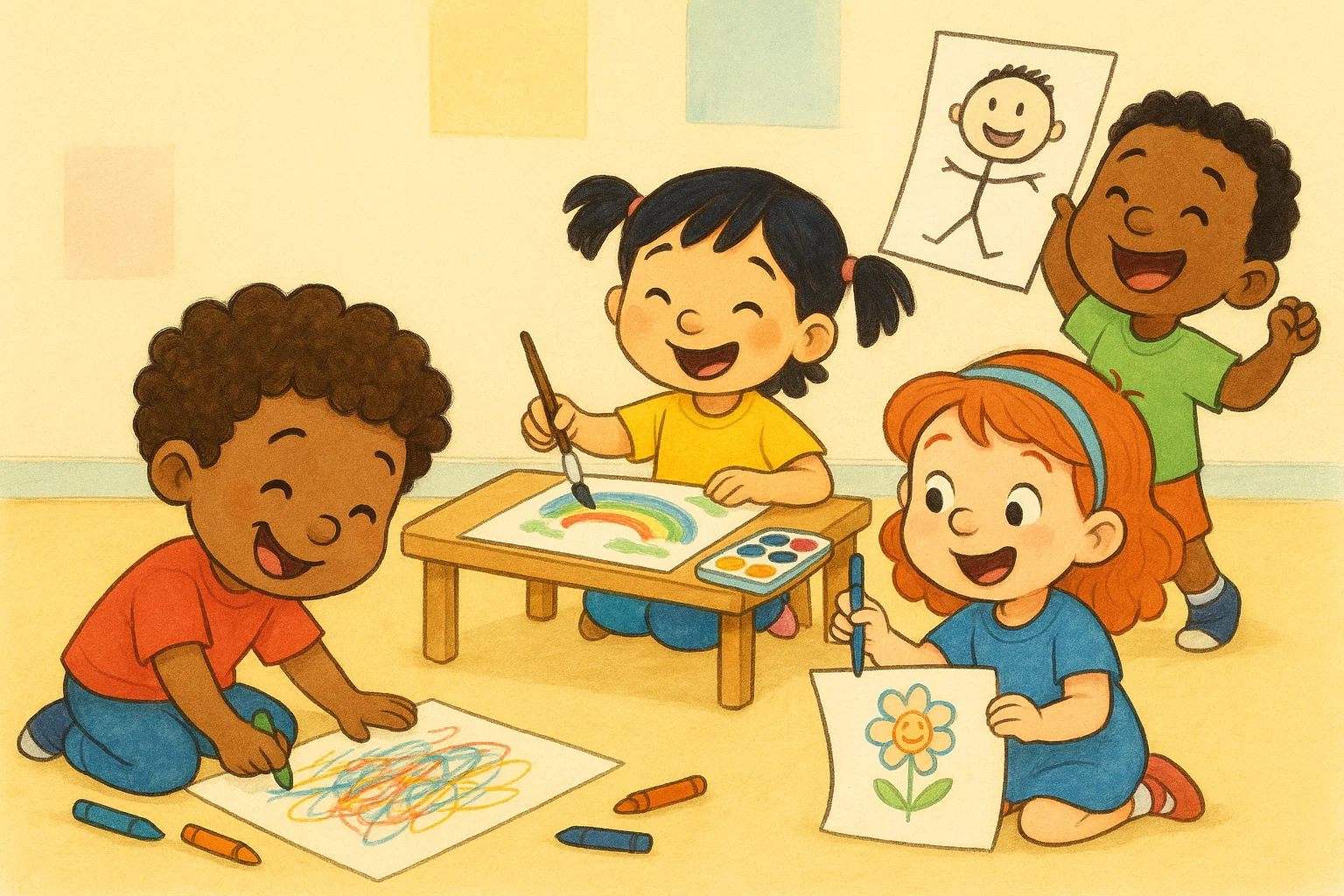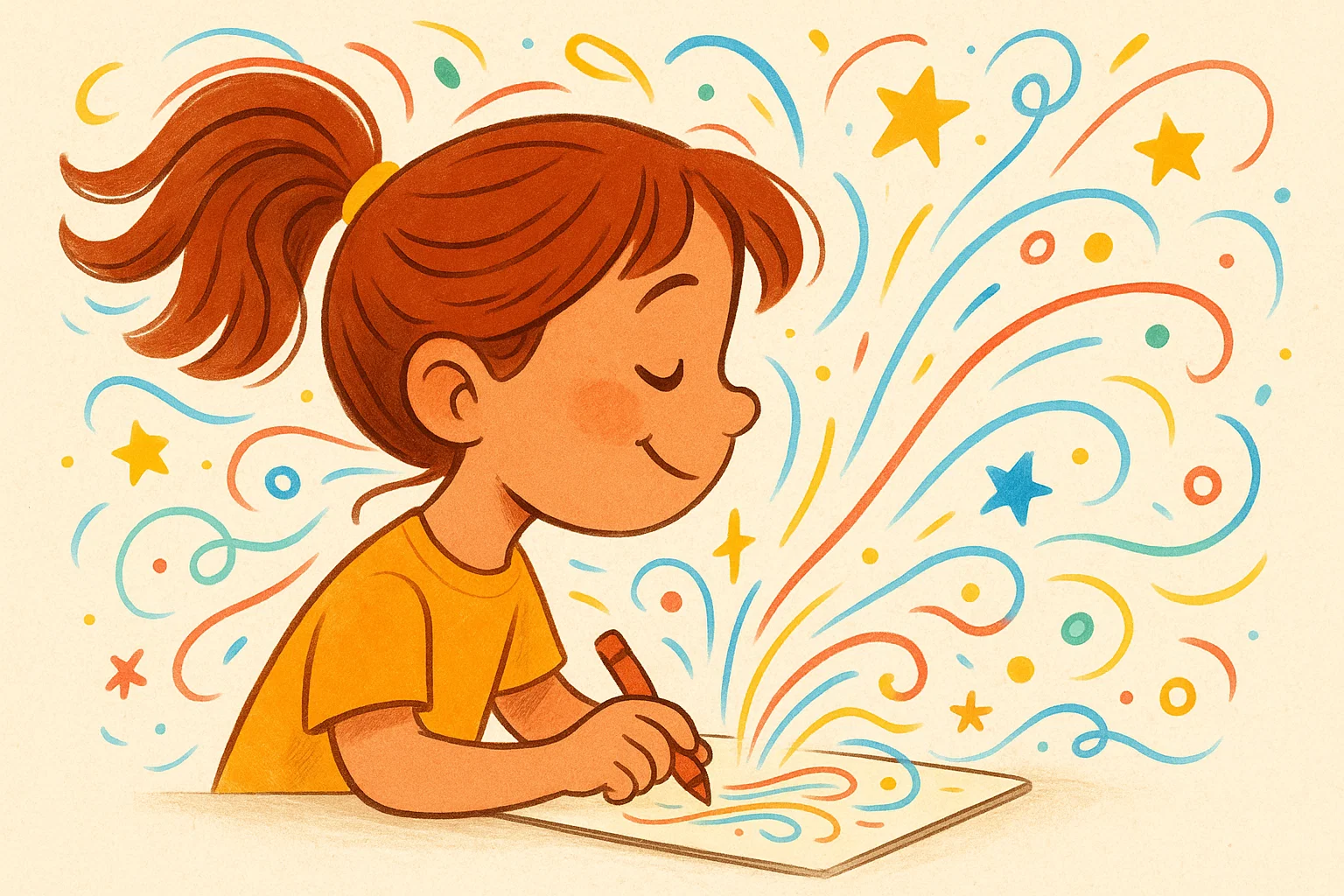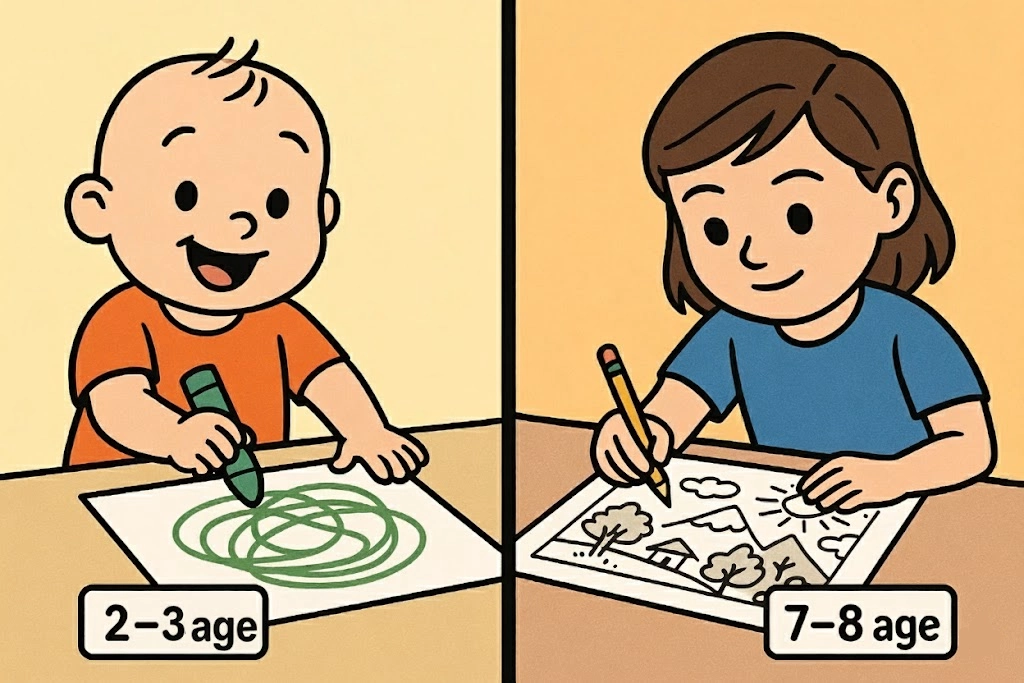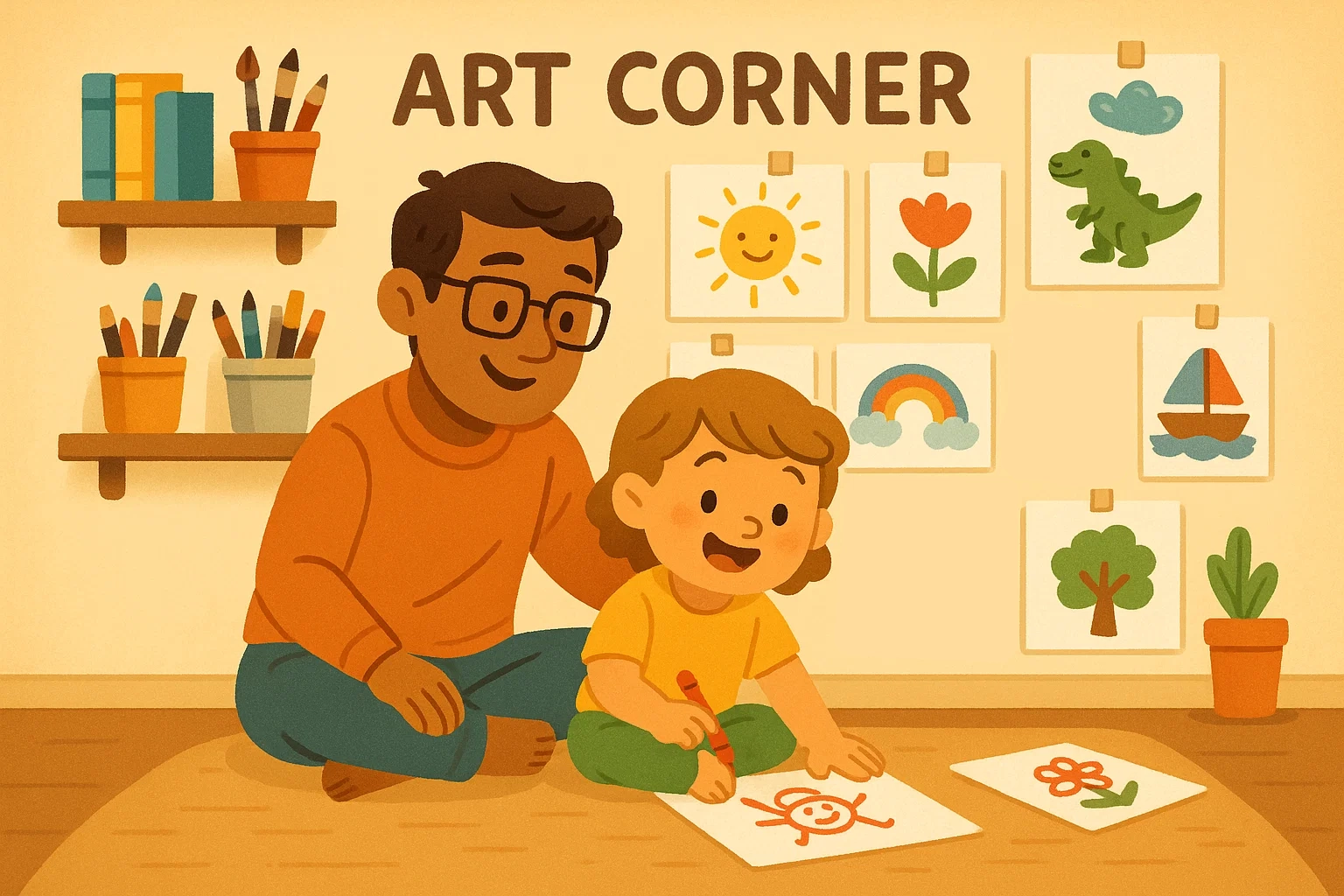Drawing Games for Kids: Draw and Nurture Creativity

Drawing games offer children far more than simple entertainment. These activities create opportunities for young minds to explore their imagination, develop essential motor skills, and express themselves in ways words cannot capture. Whether you’re a parent looking to engage your child at home or an educator seeking classroom activities, drawing games provide a foundation for creativity that extends well beyond the piece of paper.
Benefits of Drawing Games for Children’s Creativity

Before diving into specific activities, it’s essential to understand why these simple games are such a powerful developmental tool. When a child opens a sketchbook and grabs a pencil, they aren’t just passing time—they are laying the foundation for their cognitive and emotional growth.
How to Encourage Imagination and Creativity
Drawing games naturally foster imagination by removing the pressure of creating “perfect” artwork. When children participate in activities like the scribble game or collaborative exercises, they learn to see endless possibilities in simple lines and shapes.
You can encourage creativity through drawing prompts that spark curiosity. Instead of asking a child to “draw something,” try specific yet open-ended suggestions like “draw what happiness looks like” or “create a new animal that lives underwater.” These prompts provide just enough structure to begin while leaving room for personal interpretation and creative expansion.
Interactive drawing games also teach children that mistakes can become opportunities. A stray line transforms into a tree branch, an accidental dot becomes an eye, and a smudge turns into a shadow. This mindset shift helps develop resilience and flexible thinking that benefits children across all areas of life.
Drawing as a Tool for Fine Motor Skill Development
Every time a child holds a pencil or brush, they’re strengthening the small muscles in their hands and fingers. Drawing games accelerate this development by making practice feel like play rather than work. The simple act of controlling a pencil to trace a circle or connect dots builds the coordination necessary for countless daily tasks.
| Age Group | Motor Skill Focus | Typical Abilities |
| 2-3 years | Grip strength, basic control | Large scribbles, circular motions |
| 4-5 years | Precision, hand-eye coordination | Recognizable shapes, staying within lines |
| 6-8 years | Fine detail work, sustained control | Complex drawings, small details |
Activities that involve taking turns or working simultaneously with others add an extra dimension to skill development. When children engage in back-and-forth drawing games, they must coordinate their movements more carefully, considering both their own creative vision and the collaborative nature of the activity.
The Connection Between Drawing and Writing Skills
The link between drawing and writing runs deeper than many parents realize. Both activities require similar hand movements, grip strength, and visual-motor coordination. Children who spend time sketching typically find the transition to writing more natural and less frustrating.
According to educational research posted on ResearchGate, children who regularly engage in drawing activities before formal writing instruction demonstrate 40% better letter formation and pencil control. Drawing games help children develop the endurance to hold a pencil comfortably for extended periods, an often-overlooked prerequisite for successful writing.
Beyond the physical connection, artistic expression helps children understand that marks on paper convey meaning. This foundational concept underlies all written communication. When a child illustrates a story before they can write words, they’re practicing narrative structure and sequential thinking—skills that directly transfer to written composition.
Drawing Game Ideas by Age

Since children’s skills and interests change rapidly, the best drawing game is one that perfectly matches their developmental stage. Next, we will explore concrete ideas, broken down by age group, to maximize your child’s creative potential at every step.
Simple Drawing Games for Toddlers (Ages 2–3)
Toddlers need games that emphasize exploration over product. At this age, the process matters far more than the outcome. Start with activities that require minimal instruction and allow maximum freedom.
Color Scavenger Hunt: Give your toddler a specific color crayon and ask them to find things in the room that match. When they identify an object, encourage them to draw it (or their version of it) on paper. This game builds color recognition while making the activity feel purposeful.
Dot-to-Dot Connection: Create large dots on paper and let your toddler connect them freely. Unlike traditional dot-to-dot games with numbers, this version has no “correct” path. Your child decides which dots to connect, creating their own unique artwork.
Big Brush Painting: Provide chunky brushes and washable paint. Let your toddler make broad strokes across large sheets of paper taped to an easel or table. The oversized tools are easier for small hands to control and the bold results feel satisfying.
Games for Preschoolers: Best Ways to Encourage Drawing
Preschoolers are ready for games with slightly more structure while still maintaining playful spontaneity. Their improved motor skills allow for more complex activities that encourage both independence and collaboration.
The Timer Challenge: Set a timer for two minutes and give a simple drawing prompt. The time limit creates excitement without pressure. When the timer sounds, everyone shares their creation. This great game teaches children to trust their instincts and work quickly, reducing perfectionism.
Silly Shape Stories: Cut out random shapes from colored paper—circles, triangles, irregular blobs. Have your child select three shapes, glue them to a piece of paper, and then draw around them to create a silly character or scene. This activity teaches children to see creative potential in abstract forms.
Family Member Portraits: Ask your preschooler to draw each family member doing their favorite activity. This engaging game combines observation skills with emotional connection, as children think about what makes each person unique.
Advanced Drawing Activities for Older Children
Older children benefit from games that introduce artistic concepts while maintaining the fun, engaging nature of play. These activities can help develop more sophisticated skills without feeling like formal lessons.
Blind Contour Exercise: This classic activity involves sketching an object while looking only at the object, not at the paper. The results are often hilariously distorted, but the exercise sharpens observation skills and hand-eye coordination. It also teaches children to really see what they’re depicting rather than relying on symbols.
One-Line Challenges: Challenge your child to draw something—a house, a face, an animal—without lifting their pencil from the paper. This constraint forces creative problem-solving and planning.
Perspective Games: Introduce basic perspective by having children draw the same object from different viewpoints: looking up at it, looking down at it, or from the side. This develops spatial reasoning and observational skills.
Popular Drawing Games
Regardless of age, some drawing games have become classics due to their versatility and ability to instantly engage players. We have compiled four of the most popular and effective team and individual activities that are guaranteed to spark laughter and imagination.
The Classic Scribble Game
The scribble game remains one of the most versatile and beloved activities for good reason. One person makes a random scribble on paper—any collection of lines without lifting the pencil. The next person must transform that scribble into a recognizable image. This simple activity encourages creativity by forcing artists to see potential in chaos.
To play with multiple people, create several scribbles on different pieces of paper and pass them around. Each person works on whatever scribble sits before them, and everyone rotates after a few minutes. The collaborative energy of working simultaneously makes this version particularly engaging for classroom settings or family gatherings.
A variation involves using different colors for the original scribble and the transformation. This visual distinction helps younger children see how the abstract became concrete and provides a satisfying before-and-after comparison.
The Power of Collaboration: Back-and-Forth Drawing
Collaborative drawing games teach children about teamwork and creative compromise. In the basic version, two people take turns adding to the same artwork. One person might sketch a circle, the next person adds details to make it a face, the first returns to add a body, and so on.
For a more structured approach, set specific rules: perhaps each person can only add three lines per turn, or each addition must connect to what came before. These constraints spark creativity by limiting options and forcing players to think strategically about their contributions.
The “Yes, And” variation borrowed from improvisational theater works beautifully with this game. Whatever the previous person added, the next person must accept it and build upon it, never erasing or contradicting. This rule fosters acceptance and flexibility while creating often surprising and delightful results.
Blind Contour Drawing to Spark Imagination
Blind contour drawing challenges children to sketch without looking at their paper, focusing entirely on the subject. While the results rarely look realistic, this activity develops crucial observational skills and helps children break free from drawing symbols (like basic smiley faces) to capture what they actually see.
Start with simple objects that don’t move: a shoe, a plant, or a piece of fruit. As comfort grows, progress to more complex subjects. The key is emphasizing observation over outcome. Children often laugh at their distorted results, which makes this a wonderfully low-pressure way to practice.
For groups, everyone can draw the same object simultaneously, then share and compare their wildly different interpretations. This helps children understand that art is subjective and that there’s no single “correct” way to represent something.
The Exquisite Corpse Drawing Game
This surrealist game creates fantastical creatures through collaborative effort. The first player draws a head at the top of a piece of paper, then folds the paper to hide most of the illustration, leaving only the neck visible. The next person adds a torso, folds again, and passes it on. The third person draws legs, and the fourth adds feet. When you unfold the final artwork, you reveal a delightfully bizarre creature that no single person could have imagined alone.
This game works wonderfully in classroom settings where you can have multiple papers circulating simultaneously. Children learn that collaboration can produce unexpected and creative results. The element of surprise when revealing the complete image adds excitement and shows children that not knowing the full picture doesn’t prevent meaningful contribution.
Variations include horizontal versions (creating landscapes), using different materials for each section, or adding specific requirements (like “the torso must include polka dots” or “the legs should be from an animal”).
How to Encourage Drawing: Parents and Environment

The games themselves are only half the story. For drawing to become a lasting and beloved habit, adult support is crucial. Learn how to create an inspiring atmosphere and gently encourage drawing in even the most hesitant young artist.
Tips for Parents: What to Do if Your Child Doesn’t Like to Draw
Not every child gravitates naturally toward drawing, and that’s perfectly fine. However, if you want to nurture this skill without forcing it, several approaches can help. The key is removing pressure and finding entry points that align with your child’s existing interests.
If your child loves stories, suggest they draw scenes from their favorite book or create visual chapters of a story they invent. Children interested in science might enjoy sketching diagrams of how things work or illustrating their observations of nature. This approach makes artistic expression a tool for exploring other passions rather than an isolated activity.
Strategies to boost engagement:
- Eliminate perfectionism: Never criticize a child’s artwork. Focus on their process, effort, and creative choices rather than technical skill
- Offer variety: Provide different materials—chalk, markers, colored pencils, paint. Sometimes a new medium sparks interest
- Draw together: Children who resist drawing alone often enjoy it when a parent participates alongside them
- Make it functional: Let children create signs for their door, illustrations for thank-you cards, or designs for family t-shirts
- Reduce instruction: Instead of teaching “how to draw,” simply provide materials and freedom
Remember that some children express creativity through other outlets like building, music, or dramatic play. Artistic activities are valuable but not essential for every child’s development.
Creating an Inspiring Space for Drawing
The environment you create significantly impacts how often and how enthusiastically children engage in drawing. You don’t need a dedicated art studio—just thoughtful organization and easy access to materials.
Set up a station where supplies live in consistent, accessible locations. When children can independently gather a piece of paper, pencil, and any other materials they need, they’re more likely to create spontaneously. Use clear containers so children can see what’s available, and keep everything at their eye level.
Essential elements of an art-friendly space:
- Good lighting: Natural light works best, but a well-positioned lamp serves well too
- Comfortable seating: Ensure chairs and tables are the right height for your child
- Display area: Dedicate wall space or a bulletin board for hanging artwork. When children see their creations valued, they feel motivated to create more
- Variety of paper: Keep different sizes and types available. Large sheets invite bold, expressive work while smaller papers suit detailed illustrations
- Organized supplies: Group similar items together—all pencils in one container, markers in another
Consider rotating materials to keep things fresh. Put away half your supplies and bring them out a month later. This creates novelty without requiring constant purchases.
Using Drawing Time to Connect with Your Child
Drawing together offers precious opportunities for connection without the intensity of face-to-face conversation. Many children open up more easily while their hands are busy creating. This makes art time ideal for gentle check-ins about their day, feelings, or concerns.
Engage with genuine curiosity about their creative process. Instead of asking “What is it?” try “Can you tell me about what you’re making?” or “I see you chose a lot of blue—what made you pick that color?” These questions honor the child’s intent and invite them to share their thinking.
Collaborative projects strengthen bonds while teaching teamwork. Work on a large drawing together where you take turns adding elements, or create a family art journal where everyone contributes. These shared creations become treasured memories and provide tangible evidence of time spent together.
Sometimes the best approach is parallel play—you sketch your own picture while your child works on theirs. This removes any implicit pressure to entertain or interact with you while still providing companionship. Children often find this setup comforting, especially after stressful days when they need quiet connection rather than active engagement.
Frequently Asked Questions About Drawing Games
Do Drawing Games Help Improve Skills?
Absolutely. Drawing games encourage children to practice regularly. Simple activities like doodle challenges or connect-the-dots not only make the process fun and engaging but also directly improve drawing skills—from grip strength to line precision.
How Does Drawing Develop Emotional Intelligence?
Drawing is a powerful tool for self-expression and emotional expression. When a child draws what they feel or tries to create something abstract, they learn to articulate complex emotions creatively, without relying on words. Games that involve guessing drawings (such as Pictionary) also teach children to interpret visual cues.
What Are Simple Ways to Start a Game Without Preparation?
You can start with minimal effort! Take slips of paper and write simple prompts on them, like “Draw something with one eye.” Alternatively, start with a basic line or shape, asking your child to expand it and complete the drawing. You can even use a simple sticker as a starting point: stick it on the paper and turn it into part of the artwork.
